Do Iris Like Wet Soil?
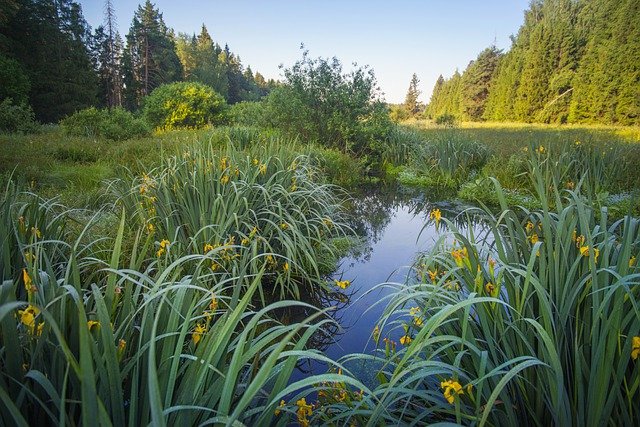
Iris plants can thrive in various environments, and many prefer wet conditions, making them ideal for pond or streamside plantings. There are many cultivars of water-loving irises, including Japanese, Louisiana, and Siberian irises. They are one of the first flowers to bloom and the easiest to grow for a long time. They can grow in a wide range of soils and sun conditions, and most of them are hardy in the United States. To have irises bloom from early spring to the end of summer, you can mix different types of irises. As a bonus, you can add a few repeat-blooming bearded irises to your garden, and you’ll have flowers in late summer and early fall. Learn more about Irises that thrive on moist soil for your next bog garden.
Table of Contents
Iris Varieties for Wet Gardens
Water Iris
Iris laevigata ‘Variegata’
It’s a beautiful plant that thrives in water. It has 4 in. (10 cm) wide, rich blue-purple flowers with broad pendant falls and slightly narrower, upright standards. This Iris will be on show from late spring to early summer. It may bloom again. The boldly striped foliage equals floral beauty. It’s made up of clumps of upright green leaves that are narrow and fairly rigid, with white stripes on them. One of the best things about this Iris is that it doesn’t fade in color.
They are clumping plants that add a burst of color to the shallow edges of a pond or stream in late spring and early summer. These irises need a lot of water (preferably acidic) and a lot of sun to grow and thrive. It’s possible to grow them in containers placed on a shelf near the edge of a pond.
Neither dry soil nor deep shade will help them to grow. Water irises can grow in dry soil, but they don’t grow as quickly as they are planted in wet soil.
Japanese Iris
Iris ensata
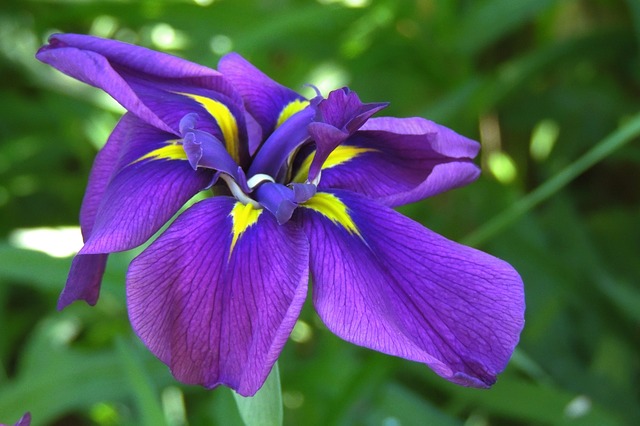
It is a semi-aquatic or bog plant that thrives in moist soil along a pond or stream. Somewhat acidic soil and full sun are also preferred. A variegated form (I. ensata ‘Variegata’) is also an option for the leaves, which are upright and sword-shaped. During the spring, vibrant shades of blue, purple, mauve, and white bloom.
Japanese native I. ensata, like I. laevigata, can grow with its rhizome crown submerged in water. They can be given a boost in flowering by feeding them a general-purpose aquatic fertilizer.
It is hardy, vigorous, and tall-growing in Louisiana irises. It is possible to grow them in a garden bed or near water. They bloom from mid to late spring and then go dormant for the summer before resuming their growth in the fall. White, yellow, red, pink, and purple are just a few of the many hues available in the flower world. Replanting rhizomes with green tips dug up in late summer will produce new shoots for the following growing season.
Siberian Iris
Iris sibirica
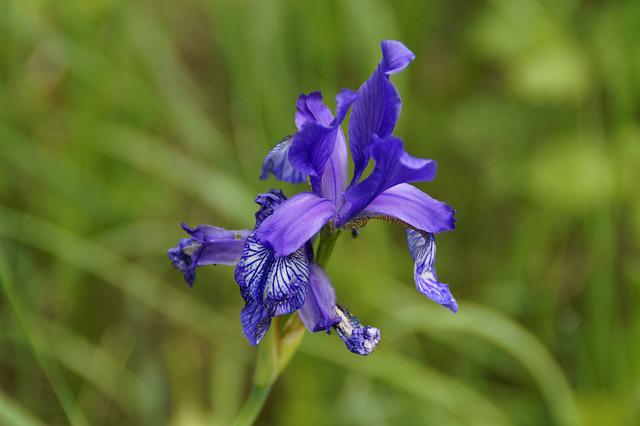
Hardy from 3 to 9, the Siberian Iris is simple to grow and interesting through all four seasons. They bloom in the spring with stunning blue, purple, or white flowers, and their grass-like foliage remains attractive throughout the summer. Leaf color changes to yellow with an orange tinge in the fall, and the seedpods can add interest to the landscape all year long. Most garden centers sell Siberian Iris as part of their perennial selection.
Colors range from white to blue, purple to red, reddish-purple to lavender-pink early to midsummer blooming times for Japanese irises.
It is common to see the native blue flag iris growing along the shore of lakes and wetlands, wet meadows, and even shallow water. In the spring, the two- to four-foot-tall plant bears blue flowers and thrives in climates ranging from 3 to 8.
This clump-forming perennial prefers moist soil and either full sun or partial shade.
The Siberian Iris has thin, grassy leaves and small flowers that make it look graceful and beautiful in late spring. When it comes to drainage, bearded irises need it the most. Siberian and Japanese irises can grow in shallow water or soil that doesn’t drain well.
Siberian Iris Rigamarole
Iris sibirica ‘Rigamarole’
This Iris is a hybrid between two other irises – Iris sibirica and Iris versicolor. It is usually a taller plant than either of its parent irises, with blue-green foliage and large, showy flowers in purple, pink, and yellow shades. The Rigamarole iris is among the most popular Iris varieties for gardens and borders. It is easy to grow, tolerant of many conditions, and has long-lasting flowers.
Yellow Flag Iris
Iris pseudoacorus ‘Variegata’
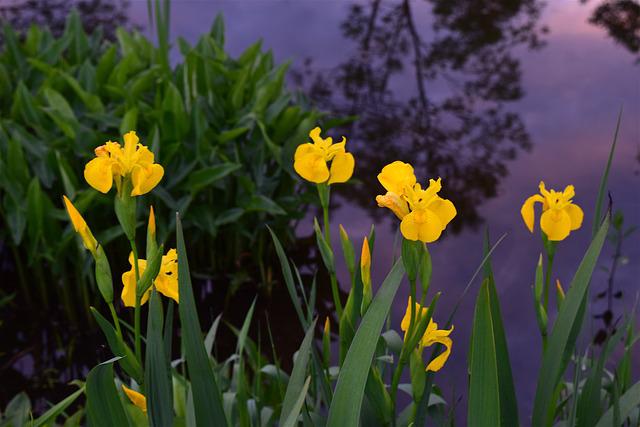
Perennial yellow flag iris is native to Europe, North Africa, and the Mediterranean area is a perennial plant. Only the Rocky Mountains are lacking in the abundance of yellow flag iris. Dry soil and high soil acidity aren’t a problem for this hardy plant, which usually grows in shallow water or mud along rivers, streams, and lakes. The summer-blooming yellow flowers of this Iris are beloved by gardeners who use it as an ornamental pond plant. Gardeners who want to take good care of their flag iris should look for any signs of invasiveness.
Blue Flag Iris
Iris versicolor
Iris versicolor is a beautiful plant that grows in the middle of the water. Green leaves and blue-violet flowers appear on stalks 2 to 3 feet tall in late spring and early summer. They do not bloom through the season. The leaves are long and narrow. There are many types of blue flag iris, and native plants can be found on the edges of swamps, wet meadows, stream banks, or in forests surrounded by wetlands. This plant is very hardy and easy to grow. It fits well in the home garden and is very hardy.
Flag Iris
Iris pseudacorus
Flag Iris is perhaps the most popular and beloved. This Iris is admired for its vibrant colors, ranging from shades of pink, red, yellow, and orange to bright green. The flowers are typically large and well-formed, and they can be found in abundance during the summer months. It is a hardy perennial that grows to 1.5-2.5 feet and has a clump-forming root system. The flowers are purple, with a white stripe down the middle of the petals, and are pollinated by bees.
Copper or Red Flag Iris
Iris fulva
It’s a beautiful iris that can be found growing in the wild throughout much of North America. It has a lovely copper color that distinguishes it from other iris species. The Copper Flag Iris also has interesting features that set it apart from other iris varieties. It has a wider petal base that makes it easier to grow in hanging baskets and container gardens. It also has a longer bloom period than other iris varieties, making it a great choice for someone who wants to enjoy a beautiful flowering display throughout the year.
Rabbit-Ear Iris
Iris laevigata
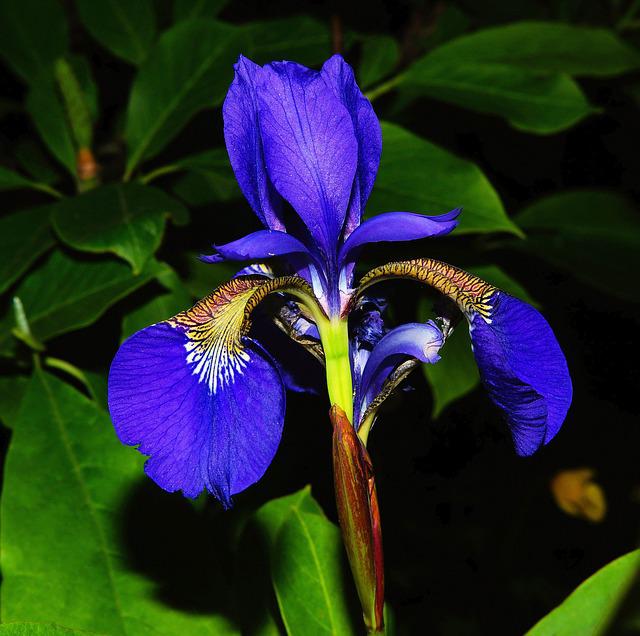
It’s a beautiful iris often planted in the front garden or border to add a touch of color and interest. It is also a popular choice for cutting, as the stems and flowers are very easy to cut. This Iris is suitable for a wide range of soils and can be grown in most parts of the country.
The large, floppy blooms are borne in large clusters and can be Viola-like in shape. The flowers are cream or yellow with a darker center and are typically offset by brown or black eyespots. The plant grows to about 18 inches in height and flowers from May to July.
Purple Iris
Iris versicolor
The purple Iris is a beautiful and popular flowering plant, especially in the garden. It typically has violet or blue blooms that come in various shades, from light lavender to very dark purple. This Iris is hardy for most areas of the United States and can climb on walls if it receives enough moisture during germination.
Louisiana Iris
Iris ‘Black Gamecock’
During the 1920s, Mrs. Tullius selected this Iris in her rose bed, and it has since become one of America’s most popular cut flowers. It grows up to 1 foot tall with dark green leaves, purple or deep lavender flowers on tubular stems that fade to cream toward the base, white eyespots, and a yellow mid lobe spot at the top, producing a black-tipped center color against a lighter background tone.
Cube-Seed Iris
Iris prismatica
This is a nice iris with flowers that float on the water’s surface, such as ponds. It has tubular glossy green stems and leaflets finely toothed and linear. The so-called cube seeds are collected from beneath the flowers for edible spice nutmeg. It’s native to India, where people have used its leaves in religious rituals.
Southern Blue Flag
Iris virginica
Also called the southern marsh iris, this plant has blue-green foliage and violet or white flowers. The stems are slender, mostly submerged in water with leaves lying flat on the surface of a pond or lake. It can grow to 6 inches tall by growing like an underwater bulb trellis as it’s native to Florida.
Rocky Mountain Iris
I. missouriensis
This flower has a distinct spicy odor and a sweet fragrance. It grows in Texas but prefers more humid locations that contain limestone or clay soils. The seeds are edible, too. They will float to the surface of the water as they germinate.
Bristle-Pointed Iris
Iris setosa
This is native to the Great Lakes area and much of northern Canada. The plant thrives in moist soil and has a rosette form with narrow, feathery leaves. It produces purple or white flowers that bloom all summer long when there’s sufficient moisture for germination during cold weather periods lasting from spring through fall months.
Dark Aura Iris
Iris robusta ‘Dark Aura’
This comes in shades ranging from deep forest green to violet. It needs more moisture than other irises, especially after the summer freeze-up and soils become too dry for good germination. The Dark Aura Iris grows several inches tall by rooting deeply into moist ground or sand at root times throughout the spring through fall months.
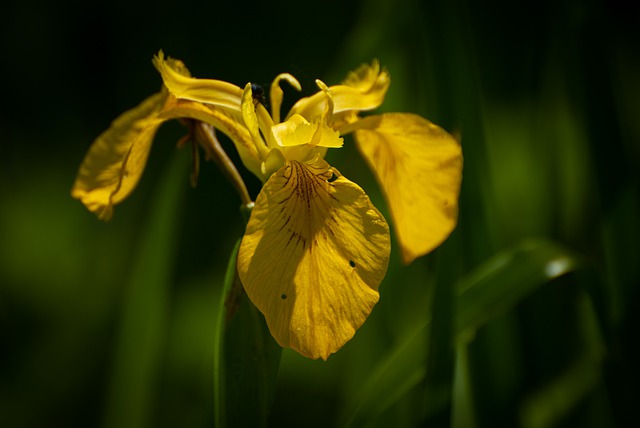
Conditions for Water Iris Plants to Grow
You should confine the growth of some water iris, such as yellow flag irises, by planting them in an extra-large pond plant basket or plastic pot. This is because they can spread rapidly and become difficult to manage. Ensure that the plant gets plenty of sunlight unless you live in a hot desert. In this case, a bit of afternoon shade is beneficial.
It’s possible to grow water Iris in a whiskey barrel that has been lined with plastic. Only a 4-inch layer of water should be present on the crown (10 cm.). The best time to plant water iris is in the fall when the plant has time to adapt to its new environment before the arrival of the colder weather. Until the roots take hold, provide afternoon shade if the weather is hot.
Taking Care of Water Irises
Feed your water iris plants with a general-purpose aquatic fertilizer to promote healthy root, foliage, and bloom growth during the growing season. Aquatic fertilizer that releases slowly is another option. Water iris tends to stay green all year round in warmer climates, but any yellow or brown leaves should be removed to keep the plant healthy and the water clean. If you live in a colder climate during the fall, you should remove the water iris from the water. Every year or two, increase the size of the container in which you’re growing your water iris.
